 |
|
This review contains light spoilers. Skip To The Verdict? »
 DC’s War Comics were usually a bit darker than their Bronze Age Westerns.
DC’s War Comics were usually a bit darker than their Bronze Age Westerns.
While published at the same time, those 70s cowboys took a more nonchalant or even slapstick approach to killing.
The soldiers were much more conflicted, representing their roles in larger, harder to understand conflicts – fighting men in much the same situation as them, often innocents trained to kill (instead of hunting down murderers in the wild deserts.)
Perhaps the most conflicted of all was German Enemy Ace, Hans von Hammer, who flew the killer skies of World War I.
Showcase Presents: Enemy Ace collects the complete Silver and Bronze Age appearances of the Enemy Ace, from his introduction in Our Army At War 151 by writer Robert Kanigher and artist Joe Kubert through various other artists in Showcase, Star-Spangled War Stories, Men At War, The Unknown Soldier, DC Special and even an appearance with Batman in Detective Comics.
Except for one written and illustrated by Kubert, and the Batman story written by Denny O’Neil, Kanigher penned each issue, often also acting as editor for the magazine.
Neal Adams pencils Star Spangled 144 and Detective. Russ Heath has work in SSWS 152, Frank Thorne on 181-193. Men of War sees art by Ed Davis, Larry Hama, and Howard Chaykin. The Unknown Soldier co-features are penciled and inked by John Severin. A host of other creators have acted as inkers, letterers and editors.
Weighing in at over 550 pages, it’s a big book – about standard for the black and white Showcase Presents editions.
We are introduced to Hans von Hammer on page 7, the first words on the page a poetic observation of a successful kill – “Like a fragile sparrow, the blue and white winged Nieuport fluttered frantically under the lashing of my twin spandaus… until..”
The french flier goes up in flames, saluting his killer as he falls from the sky. The Enemy Ace introduces himself through dialogue internal and spoken (though to who, I’m not sure. He is up in the sky in a one man plane.)
This first issue introduces almost every memorable aspect of the book – Hammer has been trained to kill, so well, in fact, that his compatriots think him a merciless killing machine. Yet he respects his enemies and will only duel them with honor.
And despite his great fame, he is a very lonely man, only identifying with a black wolf he goes to meet after his flights. The men see him as insatiable, returning from a battle only to seek more bloodshed with his rifle – but von Hammer only seeks to walk in the black forest with his only friend, another “born killer.”
He’s a very interesting character. First of all, it was a bold choice to create a German lead after WWII (even if his participation was in the earlier and slightly less horrific conflict.) It works, of course, because the desire here is to tell thrilling stories without overly glorifying war and death.
The Enemy Ace is also characteristic of a historical breed perhaps extinct, one who believes war can be fought with honor. I don’t know the true history of the World War I airmen, but perhaps it really did play out with duel-like rules, those with jammed guns and lack of ammunition being allowed to fly home and match their skills another day. In any case, Hammer himself is confronted by those representing a much more modern idea of war – that it’s simply to kill the enemy in any way possible.
What’s unfortunate is that the writing here, while carrying some interesting ideas, can also be extremely repetitive. The first 150 pages are so are the worst.
While the action varies a little bit, the dialogue and plot is almost exactly the same in every single story. Hans goes up in his plane, kills or crashes, talks about honor and how “the sky is the killer of us all,” and then goes to his black wolf, his only friend.
The dialogue is often repeated word for word and there are even panels of reused art. Much of the dialogue is very straightforward naming of planes and parts – engines, guns, etc. While it’s kind of interesting (and obviously something that a small boy in the sixties might be really into) the constant parade of italicized ship names tended to bore me – or lead to me giggling stupidly every time Hans flew about in his crimson fokker.
The slog through those first 150 pages took me 4 days of periodic reading.
It gets a bit better, because it seems that Kanigher was boring himself as much as me. To compensate, he introduces a parade of masked weirdos in the opposing planes. This freak of the week stuff is alright, but none of them really make sense, not that making sense has ever mattered much in a comicbook.
Regardless of the costume or weird insignia on the side of the plane, the conflicts play themselves out as you’d expect. At least now there’s a difference in dialogue and plot structure, so the next two hundred pages or so are more enjoyable, allowing me to read them in an afternoon.
Of the various opposing fliers, only The Hangman and The Balloon Buster are particularly memorable as characters. The Hangman, despite his appearance, represents a figure much like Hammer, fighting with honor on the French side. The Balloon Buster is an American, attacking with our characteristic recklessness and cowboy attitude.
Both are enticing challenges for the Hammer of Hell. There are also teams of skeleton fliers, pilots with warthog helmets, and a fully armored knight.
Still, Hammer is the ace, and the end result tends to be predictable for these airmen – fiery death.
The rest of the book I finished in one sitting. The latter issues flow nicer, while still leaning heavily on catchphrases and the strength of illustrated aerial combat, the Enemy Ace has the opportunity to see some action on the ground and interact with people directly. It’s a nice change of pace.
The stories are usually centered around Von Hammer’s training and overseeing of young pilots (who drop like flies) and sometimes his avenging of their loss. There are periodic twists, like his capture, trek through enemy territory, or (oddly) decision to bring a small puppy into battle.
The book is more a character study than a progression of plot. When it rides more on interaction it’s quite good, but reliance on catchphrases can get irritating. While I found it boring at times, perhaps it’s a metaphor for the monotony of war.
As for the art, that’s the saving grace of the first segment. Kubert’s well crafted planes loop about in explosive dogfights, showing off an impressive array of viewpoints for the action. It’s not Kubert’s best work, lacking the personal emotion of his best Tor projects, but it’s still good.
I couldn’t help missing color a bit, as I think the red of Hammer’s plane would have really livened up these scenes, plus many of the explosions lacked oomph without bright saturation. But the linework is still strong and clear, easily followed.
Personalizing air combat is a bit tricky, but the creators show enough panels from the cockpit view to follow our Enemy Ace’s emotions. When a wider field is shown, the pilots often have inset headshots.
I thought it might start to feel a little schmaltzy, but I found myself enjoying the technique more as the book went on instead of tiring of it. Von Hammer’s alternatively sad and determined eyes bring a lot to the work.
While Kubert is undoubtedly a master of the medium, not all of the book is his work. Of the other artists, Howard Chaykin‘s work was the most jarring change. His bold, dark shapes lend drama to some of the characters, but also created confusion during battle. His planes aren’t as well formed and may suffer the most from lack of color.
The switch to John Severin was most welcome. His Ace seems a bit sadder, perhaps, though well rendered. But it’s the aerial scenes where his subtle line and hatchwork really shines.
The lovingly rendered planes fly through bright clouds, seeming to glow in the sun. Dogfights take place above faintly suggested farmland or crater-marked battlefields.
While I like Kubert’s depiction of the characters the most, Severin’s planes steal the show.
It’s strange that scenes of violent death can be beautiful, but I suppose that’s what art does – along with the viewpoint of plane against sky, instead of men in ditches.
 With any large volume, it’s easier to give general impressions instead of specific critiques. There is a lot of exemplary work here, but it can also be very very repetitious.
With any large volume, it’s easier to give general impressions instead of specific critiques. There is a lot of exemplary work here, but it can also be very very repetitious.
A lot of this is due to the era these comics come from. They just weren’t designed to be bound in one volume and it’s doubtful Kanigher even thought early issues would be remembered by the time the kids went on to the next one.
If you’re at all interested in War Stories, it’s worth picking this volume up. You just might want to leave it in the bathroom or read it on your smoke breaks. I don’t advise trying to finish it in a sitting.
Even during the most boring parts and despite the dark depictions of aerial dogfights, Showcase Presents: Enemy Ace made me want to fly.
Verdict:
3.5 out of 5. Some great stories, some not so great stories, and a lot of catch phrase spouting redundancy, all wrapped around one of the most interesting characters in war comics.
The art is excellent and most of the volume is quite enjoyable, but those first 150 pages really dragged it down. As a historical collection, this is an excellent value for 550 pages of comics.
If you’re geeky about old planes, you will love this comic more than anything.
As far as my personal enjoyment, I was bored too often to rate it higher.
Essential Continuity:
Enemy Ace shows up in a few other places, but isn’t really a large player in the DC Universe. This book is essential for the character, but not much else.
Read first:
No prior reading is required, but the Sgt. Rock comics were running a couple years before this one if you’re interested in more war stories.
Read next:
If you’d like to see these stories in color, many of them have been printed in The Enemy Ace Archives Vol. 1 and The Enemy Ace Archives Vol. 2.
There have been two modern stories in book format. Enemy Ace: War In Heaven collects a Garth Ennis miniseries. Enemy Ace: War Idyll is an original graphic novel taking place in the 60s.
This might sound a little crazy, but I couldn’t stop thinking about a flight combat videogame while I was reading. If you like that kind of game, check out Sky Gunner for the PS2. It’s about halfway between this book and a Miyazaki film.
You may also be interested in other comics on the DC War Stories list.
As far as reviewing our way through the DC Universe Reading Order goes, before WWI we were involved in the DC Westerns. Next up is the pulp era starting with Doc Savage: The Man Of Bronze.










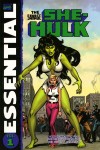
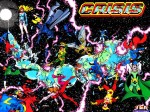
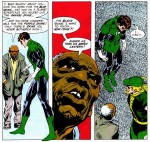








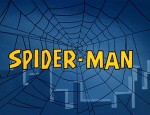


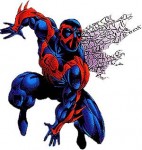

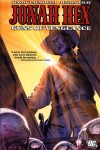




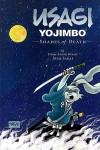
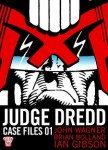



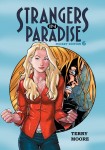
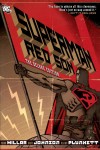



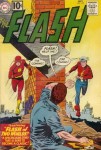
I had the Archives for several years, and yeah, slogging is a good word for it. Which is terribly disappointing for a Bob Kanigher story, considering how batshit insane the guy’s stories could be. Yeah, the coloring is nice, but for some reason, black and white just clicks better for me with war stories. Shrug. I can’t say that I’ll ever sit back and reread them again. If I wasn’t such a damn completist…
Friend of mine used to be hardcore into WWI re-enactment, and even built a WWI plane at one point…and ended up selling it to Peter Jackson’s company, believe it or not, after George Lucas’s people sniffed around it for a little while. Anyway, he was definitely familiar with Enemy Ace, and years ago I bought him War Idyll for Christmas, and eventually the Archives. He went on and on about how wonderful and relatively accurate the art was, and he knew what he was talking about. The stories? He didn’t read them for the stories, as I found out when I finally sat down to read my copies. Whooo boy. Give me Sgt. Rock any day.
[Reply]
haha, glad you agree. And good to hear that they’re relatively accurate. I kind of got that impression.
I know what you mean about being a completionist! But I’ll have the archives on my shelves as well at some point, I’m sure.
About Kanigher, I kind of get the impression that he was either a very overburdened writer, or a somewhat lazy one. I’m willing to give him the benefit of the doubt (and understanding of the time period) but nothing I’ve read by him so far makes me want to seek him out.
But sometimes really crazy stories can come from throwing ideas at deadline, and in the hands of the right artists or collaborators, those could be fun.
And some of the ones in this volume (like the puppy!!??) are pretty over the top entertaining. It’s a shame they weren’t like that as an average instead of the exception to the rule.
[Reply]
I’m glad this picked up after the beginning…I remember you saying those first few issues were pretty tough to get through. It’s really too bad the Archives program has stalled the way it has, because I think it would only take one or two more volumes to finish this series up in color. I’ll probably check Enemy Ace out once I’m done with the Sgt. Rock Archives, but for now I’m pretty into reading more of that series because it’s just fantastic (I’m like halfway through the first volume, and I can only imagine it gets even better).
[Reply]
I am looking forward to the Sgt. Rock showcases once I get there.
Are you planning on reading the modern ones as well? I’ve got them placed chronologically, so I’ll be alternating a little, I think.
[Reply]
Step 7: Type your new password again when the command “Retype the password to confirm” appears.
This article will give step by step instructions on how you can recover a WEP password.
*Click on a standard user account (you cannot set parental controls for administrative accounts).
[Reply]
see here for top quality arthritic dogs around
[Reply]
Good day I am so delighted I found your website, I really found you by mistake, while I was researching on Digg for something else, Anyways I am here
now and would just like to say thank you for
a remarkable post and a all round thrilling blog (I also love the theme/design), I don’t have time to read it all at the minute but I
have book-marked it and also added in your RSS feeds,
so when I have time I will be back to read a great deal more, Please do keep up the superb job.
[Reply]
I am genuinely grateful to the owner of this web
site who has shared this great article at at this time.
[Reply]